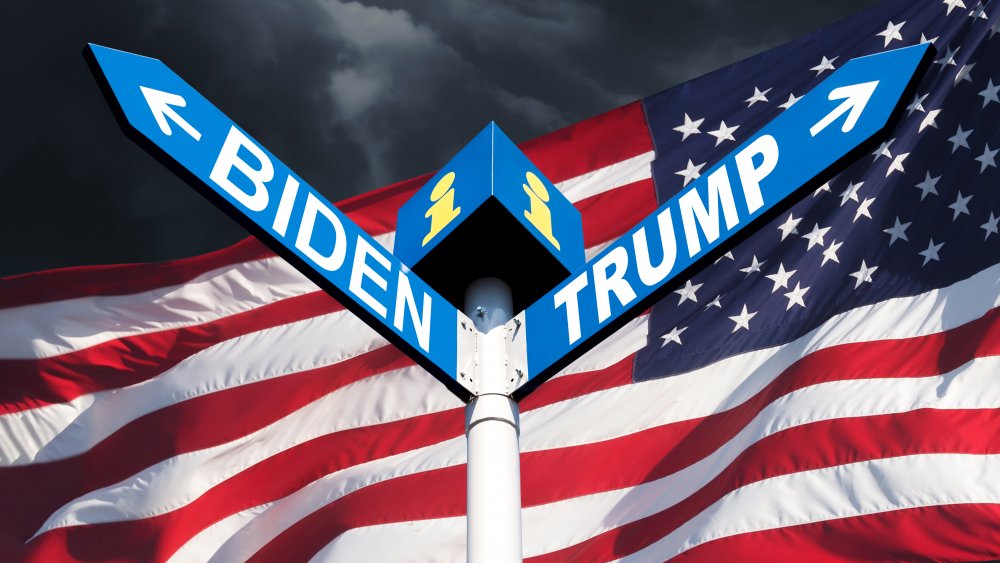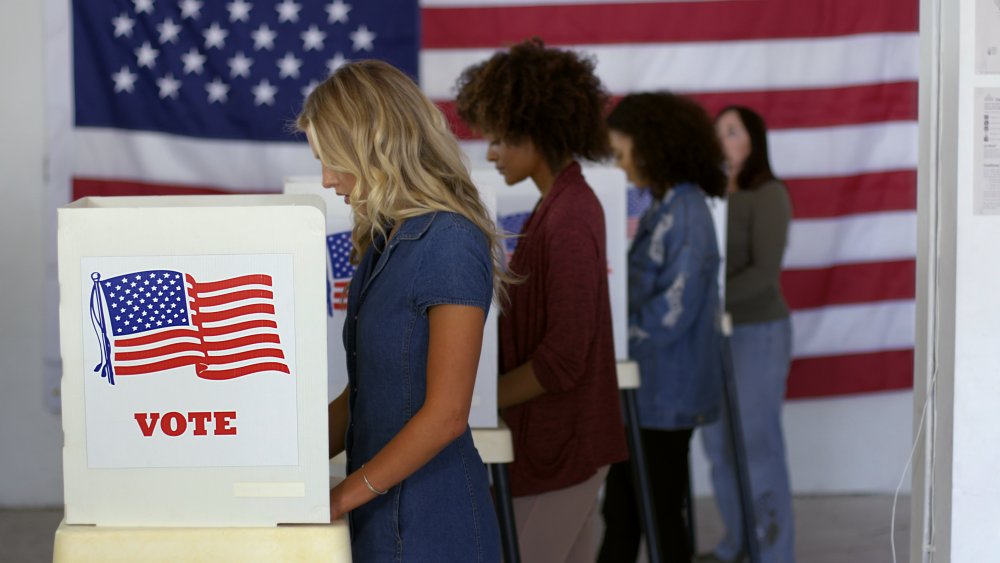Here's What Happens If There Is An Electoral Tie
As the race to the presidency continues, the drama in the battleground states is getting heated, and for Democrats, bad memories from 2016 seem to be playing out again. The easy victory that was anticipated is now a very close race, and there is even talk that these candidates are in such a tight race there could be an electoral tie. But what happens if neither candidate gets the required 270 votes to win?
If there is an electoral tie in the presidential election and each candidate receives 169 electoral votes or any number under the threshold of 270 electoral votes to win, the Presidential race is decided in the House of Representatives. Each state's delegate has one vote and the winner is named by a majority with 26 votes to win. Senators would elect the vice president, with each senator having a vote and a majority of 51 votes needed to win (via 270 To Win).
An electoral tie has only happened once in the history of the United States
The 1800 election between Aaron Burr and Thomas Jefferson was the only presidential race in history that the candidates had an electoral tie. Thankfully, the founding Father's clarified in Article II, Section 1 of the Constitution that, "[I]f there be more than one who have such Majority, and have an equal Number of Votes, then the House of Representatives shall immediately chuse by Ballot one of them for President." Unfortunately, at the time the House was so divided it took 36 deadlocked votes before Jefferson was officially named President (via History).
It's really important to remember that a tie on election night is not actually a tie. The Electors don't actually meet until December 14, 2020, and they are not required to vote for the popular vote winner. It is entirely possible that an Elector could cast his or her vote for another person which is exactly what happened in the 2016 election with 7 Electors going against the popular vote (via 270 To Win).

